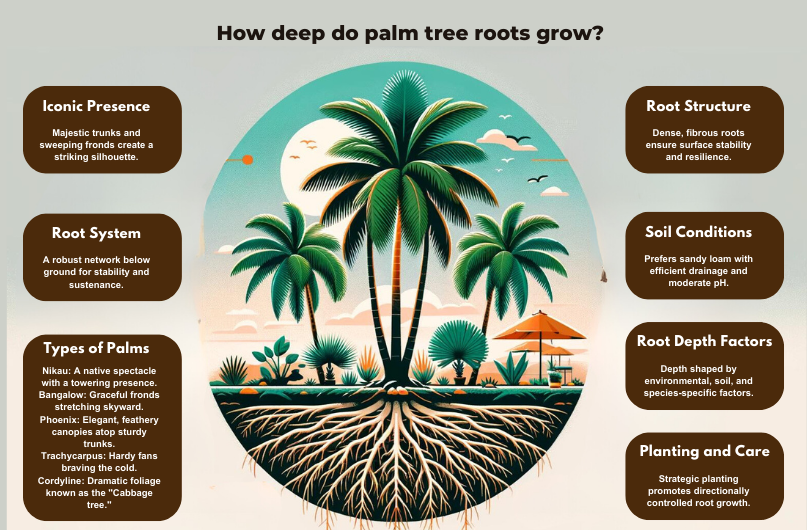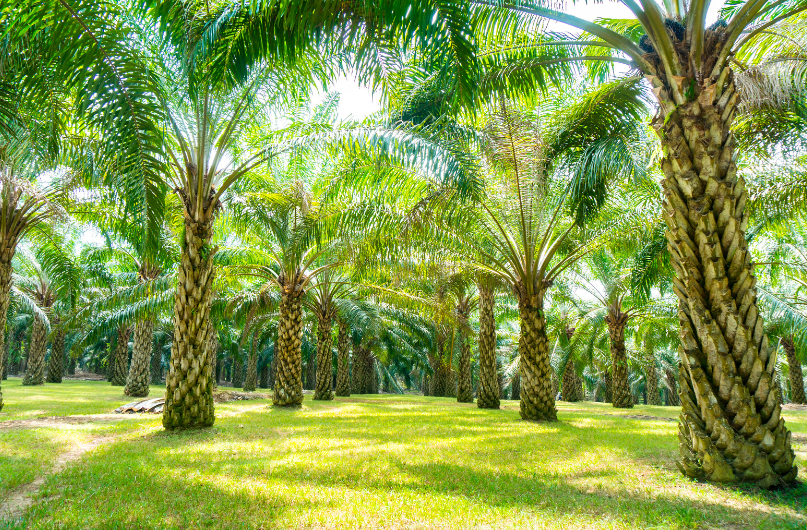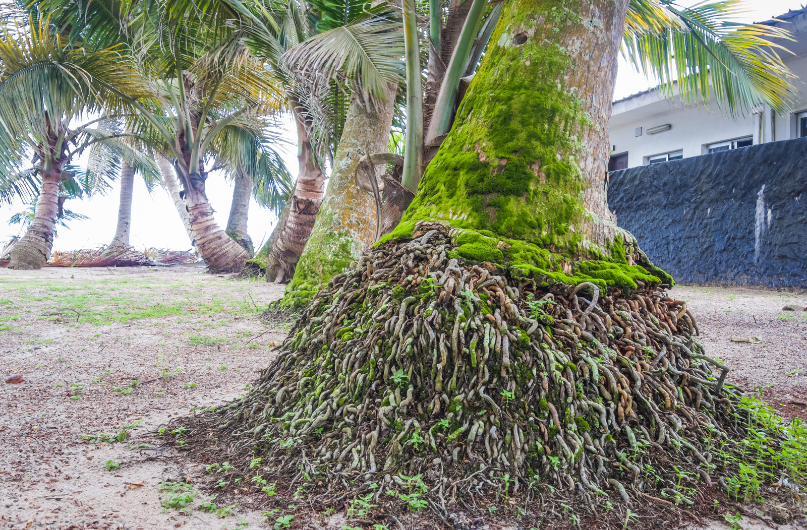Palm trees are an iconic part of landscapes in tropical and subtropical climates around the world. With their tall trunks and large, fanning fronds, palm trees make a striking visual statement wherever they grow. While the visible above-ground portion of a palm is appealing, what goes on below ground with the roots is equally important. A palm's extensive root system serves not just to anchor the tree in place, but also to take in water and nutrients needed for growth and health. Understanding how deep palm roots grow and spread can help you better care for your trees and avoid potential conflicts with hardscape features like sidewalks or driveways. Proper planting techniques and care can encourage roots to grow primarily in desired directions to prevent damage. In this article, we’ll take a closer look at factors influencing palm root depth and growth to help demystify what goes on underground with these popular trees.

Some of the most common types of palm trees found in New Zealand include:

Palm trees have complex root systems that are quite different from other types of trees. Most trees develop what are known as taproots, which are a single, deeply growing large root that anchors and provides stability to the tree. Palm trees lack this main taproot and instead develop a root structure called fibrous or adventitious roots.
Fibrous root systems consist of many small, thick and short roots growing out laterally from the base of the trunk. Rather than growing downwards to anchor the tree, palm roots spread outwards just under the surface. These shallow, matted roots provide the tree support and stability on the surface, while still taking in sufficient water and nutrients.
This fibrous network of roots is clearly different from a taproot and is an adaption to the environment and soils where palms grow. The shallow yet widespread root system allows palms to gather water quickly and avoid drying out, which suits their tropical and subtropical native environments. The many fibrous roots also aid in transplanting mature palms, as a fair amount of the root system can be retained when the palm is moved.

Palm trees grow best in warm, tropical climates with sandy, well-draining soil. The ideal soil conditions for healthy palm root growth include:
Providing the ideal growing conditions encourages deep, extensive root development in palm trees. Monitor soil moisture, drainage, pH and fertility to ensure roots can thrive.
There are several key factors that influence how deep palm tree roots grow:
The combination of climate, soil conditions, and genetics all contribute to root depth. Understanding these factors provides insight into how deep roots grow and their potential impacts. Proper planting techniques that encourage deep rooting can be important for palm health and structural stability.

The typical root depth varies somewhat between different types of palm trees, but some general ranges are:
So in general, most palm tree roots are in the top few feet of soil, but some types send down taproots double that length or more. This gives them a strong anchor against high winds. The lateral roots also grow outward quite a distance from the trunk.
Palm trees are capable of developing extremely deep root systems under ideal conditions. Here are some records for the deepest observed palm root depths:
Under the right outdoor growing conditions, palm species can exceed rooting depths of 20-30 metres (65-100 feet). Their roots penetrate deeper than most other tree types in tropical locations. Proper soil, moisture, drainage, and climate allow palms to drive their roots to remarkable depths.

Palm trees have widespread root systems that typically extend past the tree canopy. The root system grows horizontally at or near the soil surface, radiating out from the trunk in all directions.
Some key facts about palm root spread:
The extensive root system spreads widely but usually not deeply, allowing palms to thrive with high stability even in tropical storm conditions. Understanding the horizontal reach of roots is important for avoiding foundation damage and planning landscapes around palm trees.
Palm tree roots can potentially damage building foundations and underground pipes. As the roots grow, they may exert pressure on surrounding structures. Cracks in walls, floors, or sidewalks near a palm tree may indicate root intrusion. Plumbing leaks could also result from root damage to underground pipes.
Some species of palm trees have more aggressive root systems than others. Coconut palms and Chinese fan palms, for example, are known to have invasive roots that can infiltrate nearby infrastructure. Proper planting distance from a building's foundation is important to prevent future root interference. Periodic pruning of visible surface roots may also help reduce root growth and spread. Professional arborists can provide guidance on managing palm trees to minimize foundation damage risks.
Regular inspections around palm trees and maintaining their overall health can help avoid expensive foundation repairs. Addressing potential root issues early is key. Palm trees are most stable when their anchoring root system is undisturbed and intact. With some forethought about placement and preventative care, palm trees can thrive without undermining landscape structures.
Palm tree roots require occasional care and maintenance to keep them healthy. Here are some tips:
Properly caring for palm roots will keep the tree healthy and minimize root issues over time. Monitor their growth and take action when problems occur.
When it comes to addressing the unique care requirements of palm trees, our seasoned expertise at LandscapingHQ is the difference between maintaining the mere existence of your palm trees and ensuring they flourish gloriously under your care. Here’s why you need to hire us:
Our deep appreciation and understanding of palm trees, from the iconic Nikau to the ornamental Bangalow and resilient Trachycarpus, enable us to provide exceptional care tailored to each species.
The foundation of a healthy palm is its root system. Our team has extensive knowledge about the palm roots' unique fibrous structure and needs. With our guidance, we ensure your palms have the solid base they need to grow tall and strong.
We recognize that the perfect soil conditions—sandy loam with adequate drainage—are critical for palm health. Our expertise guides you in achieving the ideal soil environment, fostering deep, healthy roots and preventing common issues such as root rot.
Understanding the extensive spread of palm roots, we help you implement effective strategies, such as proper planting location and the use of root barriers, to prevent potential foundational damage to nearby structures.
Our experts provide personalized nutritional plans, selecting the right fertilizers and mulching techniques that boost your palm's environmental tolerance, ensuring they thrive in New Zealand's specific conditions.
Harsh weather can render palm trees susceptible to a myriad of issues. When facing such adversity, our swift response time and expert arborist services, including pruning, trimming, and removal, ensure your palm trees' integrity is restored and maintained.
Last but not least, our team is not just qualified; we are passionate about our work. With LandscapingHQ, you don't just hire a service. You invest in a partnership with arborists who regard the wellbeing of your palm trees as a testament to our shared dedication to nature.
When choosing LandscapingHQ, you opt for unrivaled knowledge, skill, and dedication to ensuring your palm trees capture the essence of tropical beauty while standing strong in the landscape of New Zealand. Contact us today to ensure your palms are not only surviving but thriving.
New Zealand is home to several types of palm trees such as the Nikau Palm, Bangalow Palm, Phoenix Palm, Trachycarpus Palm, and Cordyline Palms. Each of these palm varieties exhibits unique characteristics, making them suitable for various climates and landscapes.
Unlike other trees that develop main taproots, palms develop a fibrous or adventitious root structure. Fibrous root systems consist of many small, thick, and short roots growing out laterally from the base of the trunk, providing the tree support and stability while still effectively taking in water and nutrients.
Ideal soil conditions for healthy palm root growth include sandy loam or sandy clay loam soil texture, a pH between 6.0-7.5, adequate drainage and aeration, warm year-round temperatures, moderate fertility and organic matter, and proper irrigation.
Coconut palms and Chinese fan palms are known to have invasive roots that can cause damage to foundations and underground pipes. To prevent such damage, maintaining a proper distance while planting, pruning visible surface roots, and periodic checks by professional arborists are recommended.
Regular pruning of roots (if needed), application of palm tree fertilizer, consistent watering, mulching around the root area, soil aeration, installation of root barriers, and careful transplantation of the tree can help ensure healthy root growth and longevity of palm trees.